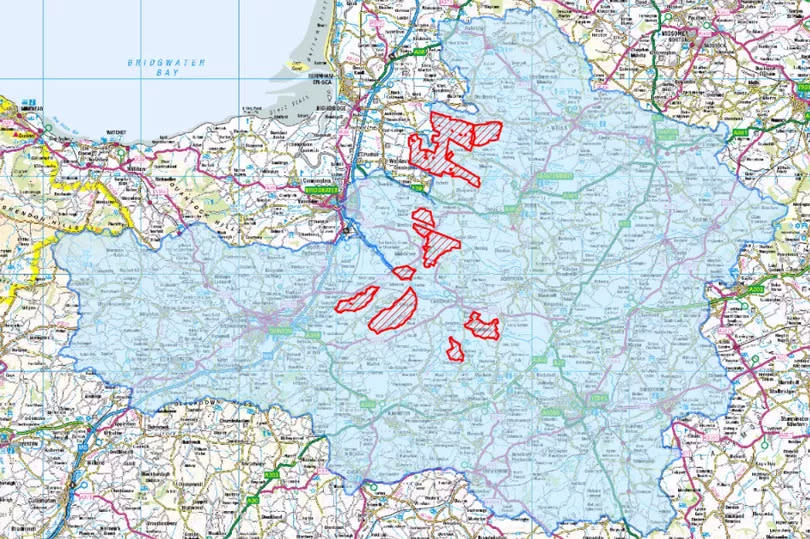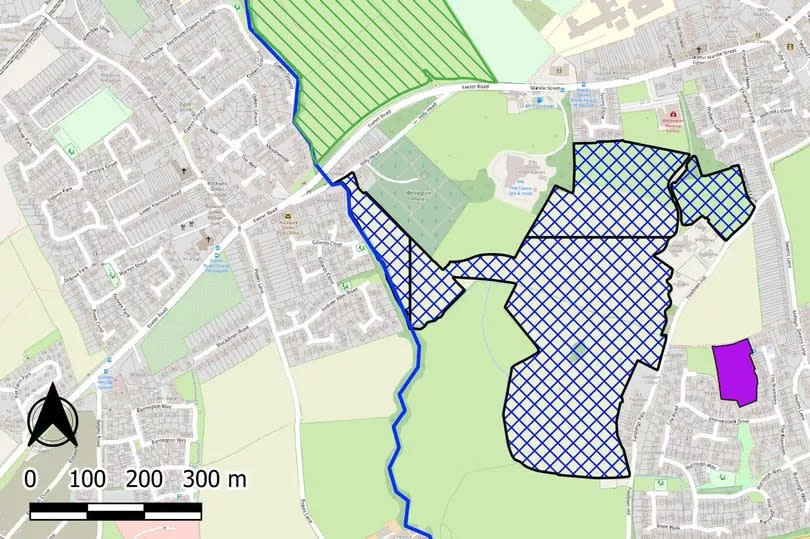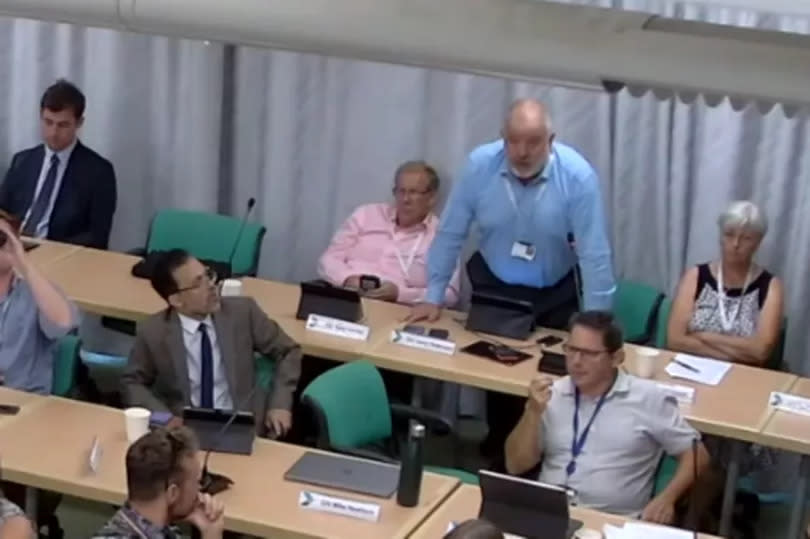18,000 Somerset homes remain in limbo

Somerset Council's executive has refused to make changes to its nutrient neutrality policy, which could potentially allow thousands of new homes to be constructed. Around 18,000 new homes across Somerset are currently in limbo as a result of the phosphates crisis, with developers needing to secure additional mitigation to prevent any net increase of phosphates on the Somerset Levels and Moors.
The council's climate and place scrutiny committee held a special meeting on water quality in late-April, making several substantial recommendations to the council's executive which could resolve the ongoing issues.
But the council's executive committee, on the advice of its planning team, has refused to take these changes forward, citing the risk of legal action, inadequate evidence and a lack of staff resources.
READ MORE: General election 2024: 7 things we learned from the Langport hustings
The scrutiny committee made five key recommendations at its meeting held on April 26:
Removing the 20 per cent buffer included in the Somerset phosphate calculation, reducing the amount of mitigation that developers were required to secure
Conduct a review into how much river-borne phosphorus enters the Somerset Levels and Moors, following new information from Wessex Water and citizen scientist Dr. Andrew Clegg
Conduct an urgent review into the council's entire nutrient neutrality policy, following legal advice that "headroom exists" (which could allow more homes to be unlocked)
Set up a task and finish group to set out a time-scale for policy changes once the correct data is available
Create a land use strategy as part of the Somerset Local Plan, to allow mitigation sites to be more easily identified and secure in the future

However, after receiving legal advice, the council's planning team had advised that none of these recommendations can be taken forward. Alison Blom-Cooper, the council's chief planning officer, laid out the rationale for this decision when the council's executive committee met in Taunton on June 5.
Taking each point in turn, she said:
There were "no cogent reasons" to depart from Natural England's legal advice over the 20 per cent buffer, with the same calculation system being used by 70 local authorities across the UK
The studies on phosphorus entering the River Parrett only covers a small area and can "underestimate phosphorus pollution loads by 60 per cent" - with the council not having the expertise or resources to "undertake a research project of this scale and complexity"
There has been no legal challenge to existing nutrient neutrality rules by either councils or developers - meaning departing from the current position could create the "risk of legal action"
Staff resources are currently focussed on short-term mitigation efforts funded by £9.6m of central government grants, which must be spent by March 2025 - though a task and finish group could be set up after this date if resources allow
The council does not have statutory powers to "control some land uses", and there is limited staff resource available for the creation of the new Local Plan (which is not expected to be ratified until late-March 2028)
Water quality has been a significant issue during the general election campaign, with the Liberal Democrats frequently criticising the ruling Conservative government for allowing raw sewage discharges into Somerset's rivers. Councillor Ros Wyke, portfolio holder for economic development, planning and assets, stressed: "Water quality in Somerset is something which is close to all our hearts, whether it's wild swimming, drinking or just enjoying the countryside."
The £9.6m grant - which was confirmed shortly before Christmas 2023 - will be divided over the following six projects:
A Salinity Solutions pilot, using reverse osmosis to filter out 95 per cent of water-borne phosphates before they reach the Levels (£2m)
Identifying land with the Levels and Moors catchment area where new wetlands or other natural mitigation can be delivered, along with biodiversity net gain (£3.5m)
Retrofitting social housing to reduce the amount of phosphates which enter the Levels and Moors from current properties (£1m)
Creating nature-based solutions on council-owned land, including new wetlands or nature reserves (£2m)
Growing miscanthus grass on fallowed land to generate additional phosphate credits (£640,000)
Researching new technologies which could be scaled up and deliver additional mitigation in the years ahead (£480,000)

The council launched its 'call for sites' within the Levels and Moors catchment area on May 20, with landowners having until July 15 to bring forward sites for assessment. Ms Blom-Cooper said: "We've had a number of landowners approach us before we launched the call for sites, wanting to work with us.
"The third party phosphate credits market is really well-developed, so we've already got sufficient credits to unlock about 4,500 homes." Ms Wyke added: "The more phosphate credits are available, the cheaper they will become and therefore that will help with housebuilding for many developers.
"At the moment there is still demand at a fairly high level, which is why the price hasn't fallen yet - but it will fall in due course if we get it right with adding more credits to the marketplace." Councillor Henry Hobhouse - who sits on the climate and place scrutiny committee - reacted angrily to the executive's position, stating: "Natural England has no scientific proof on anything that they have advised us to do.

"We are conflating the sewage going into the rivers with what is going onto the Levels and Moors. It is not good us saying that we don't have the officers to undertake a high standard of investigation into phosphate levels."
Councillor Mike Rigby added: "We have a recent history of upgrades by Wessex Water, which is now removing 160 tonnes of phosphates every year in this catchment. The entirety of the stranded housing - 18,000 homes - would produce just three tonnes of phosphates per year."
A further update on phosphate mitigation efforts is expected to come before the council's strategic planning committee in September.

 Yahoo News
Yahoo News 
